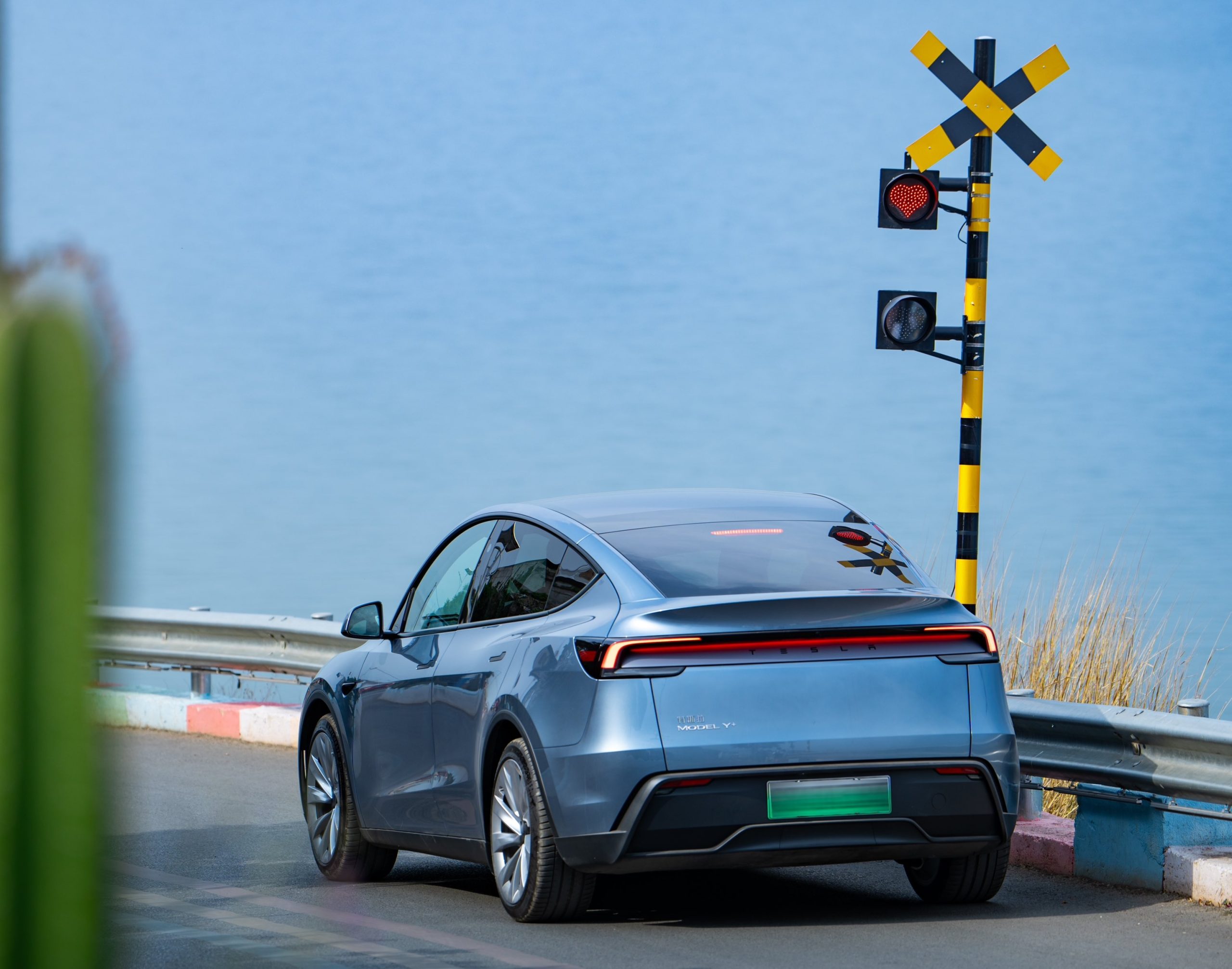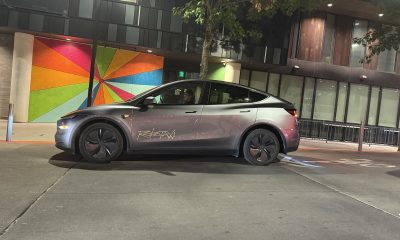News
How Tesla’s ridesharing network could disrupt the airline industry

The auto industry is changing. Autonomous and electric cars are becoming more available sooner than many people think. This will become even more prevalent once Tesla delivers upwards of 500k to 1 million self-driving vehicles per year by the end of the decade. But this change from gas-powered cars to a world powered by battery electric vehicles won’t be isolated to the auto industry. It will likely affect other sectors, including the airline industry.
Disrupting the Airline Industry
As advances in the auto industry make traveling by car more attractive, airlines will have to adjust to the steeper competition. Short haul flights, flights less than 300 miles, will be most significantly affected. Short haul flights cost an average of $120 above the cost of driving, and reduces door-to-door travel time by roughly an hour. These types of city to nearby city flights make up 25% of all US domestic departures.
According to a new Morgan Stanley study, if demand for short haul flights completely disappeared, it would lead to about a 15% loss in earnings. The study also acknowledged that such a change would take at least five to ten years, giving the airline industry time to adjust.
Modern Car Travel
Even without Tesla’s ridesharing network, widespread adoption of electric cars and existing ridesharing services are making people reconsider their reasons for traveling by plane. Services such as Uber and Lyft are more cost effective than flying, and oftentimes more convenient due to the ease of scheduling a ride and with more range of options available. Travelers sacrifice the shorter travel time of a flight, but the difference is oftentimes not too significant.
Southern California-based Tesla-only intercity shuttle service, Tesloop, currently provides transportation service between Los Angeles, Las Vegas and Palm Springs, and will be looking to expand its operations into new markets. The drivers, which the company refers to as “pilots”, transport passengers using Tesla Autopilot. And like the experience in an airplane, Tesloop provides snacks, water and Wi-Fi to its passengers. Why is this important? By replicating the experience of airline travel, while doing so at lesser cost than a traditional short haul flight, Tesloop presents a compelling reason to use ground transportation and forego vehicle ownership.
The Future of Car Travel
Ridesharing, autonomous cars and electric cars are three trends that are not going away any time soon. In fact, they will likely continue to become more commonplace and alter the way we live in meaningful ways.
As technology continues to advance, the comfort, flexibility and reliability of ridesharing, electric cars and autonomous cars will increase as the cost decreases. This will make them more attractive to travelers and further threaten airlines.
In the future, new forms of automobile travel will begin to improve in the areas where flying currently has an advantage. Autonomous cars will make traveling on the roads safer for everyone. Once human error is taken out of the equation, speed limits will likely be increased, lessening the time advantage flying currently has over driving.
Tesla’s free long distance travel for life Supercharging model combined with advances in Autopilot and self-driving technology, plus ridesharing, are already altering the way we think about travel, and their impact on other industries will only increase with time. New technologies bring about change. New ideas create new opportunities in economies and in our way of life.
The advancements will likely disrupt many industries that exist today, including the airline industry. Airlines will have to adjust to the changes — but who knows? Maybe one day autonomous and electric planes (or flying cars) will disrupt the autonomous electric car ridesharing economy.
News
Tesla China registrations hit 20.7k in final week of June, highest in Q2
The final week of June stands as the second-highest of 2025 and the best-performing week of the quarter.

Tesla China recorded 20,680 domestic insurance registrations during the week of June 23–29, marking its highest weekly total in the second quarter of 2025.
The figure represents a 49.3% increase from the previous week and a 46.7% improvement year-over-year, suggesting growing domestic momentum for the electric vehicle maker in Q2’s final weeks.
Q2 closes with a boost despite year-on-year dip
The strong week helped lift Tesla’s performance for the quarter, though Q2 totals remain down 4.6% quarter-over-quarter and 10.9% year-over-year, according to industry watchers. Despite these declines, the last week of June stands as the second-highest of 2025 and the best-performing week of the quarter.
As per industry watchers, Tesla China delivered 15,210 New Model Y units last week, the highest weekly tally since the vehicle’s launch. The Model 3 followed with 5,470 deliveries during the same period. Tesla’s full June and Q2 sales data for China are expected to be released by the China Passenger Car Association (CPCA) in the coming days.
Tesla China and minor Model 3 and Model Y updates
Tesla manufactures the Model 3 and Model Y at its Shanghai facility, which provides vehicles to both domestic and international markets. In May, the automaker reported 38,588 retail sales in China, down 30.1% year-over-year but up 34.3% from April. Exports from Shanghai totaled 23,074 units in May, a 32.9% improvement from the previous year but down 22.4% month-over-month, as noted in a CNEV Post report.
Earlier this week, Tesla introduced minor updates to the long-range versions of the Model 3 and Model Y in China. The refreshed Model 3 saw a modest price increase, while pricing for the updated Model Y Long Range variant remained unchanged. These adjustments come as Tesla continues refining its China lineup amid shifting local demand and increased competition from domestic brands.
Elon Musk
Tesla investors will be shocked by Jim Cramer’s latest assessment
Jim Cramer is now speaking positively about Tesla, especially in terms of its Robotaxi performance and its perception as a company.

Tesla investors will be shocked by analyst Jim Cramer’s latest assessment of the company.
When it comes to Tesla analysts, many of them are consistent. The bulls usually stay the bulls, and the bears usually stay the bears. The notable analysts on each side are Dan Ives and Adam Jonas for the bulls, and Gordon Johnson for the bears.
Jim Cramer is one analyst who does not necessarily fit this mold. Cramer, who hosts CNBC’s Mad Money, has switched his opinion on Tesla stock (NASDAQ: TSLA) many times.
He has been bullish, like he was when he said the stock was a “sleeping giant” two years ago, and he has been bearish, like he was when he said there was “nothing magnificent” about the company just a few months ago.
Now, he is back to being a bull.
Cramer’s comments were related to two key points: how NVIDIA CEO Jensen Huang describes Tesla after working closely with the Company through their transactions, and how it is not a car company, as well as the recent launch of the Robotaxi fleet.
Jensen Huang’s Tesla Narrative
Cramer says that the narrative on quarterly and annual deliveries is overblown, and those who continue to worry about Tesla’s performance on that metric are misled.
“It’s not a car company,” he said.
He went on to say that people like Huang speak highly of Tesla, and that should be enough to deter any true skepticism:
“I believe what Musk says cause Musk is working with Jensen and Jensen’s telling me what’s happening on the other side is pretty amazing.”
Tesla self-driving development gets huge compliment from NVIDIA CEO
Robotaxi Launch
Many media outlets are being extremely negative regarding the early rollout of Tesla’s Robotaxi platform in Austin, Texas.
There have been a handful of small issues, but nothing significant. Cramer says that humans make mistakes in vehicles too, yet, when Tesla’s test phase of the Robotaxi does it, it’s front page news and needs to be magnified.
He said:
“Look, I mean, drivers make mistakes all the time. Why should we hold Tesla to a standard where there can be no mistakes?”
It’s refreshing to hear Cramer speak logically about the Robotaxi fleet, as Tesla has taken every measure to ensure there are no mishaps. There are safety monitors in the passenger seat, and the area of travel is limited, confined to a small number of people.
Tesla is still improving and hopes to remove teleoperators and safety monitors slowly, as CEO Elon Musk said more freedom could be granted within one or two months.
News
Tesla launches ultra-fast V4 Superchargers in China for the first time
Tesla has V4 Superchargers rolling out in China for the first time.

Tesla already has nearly 12,000 Supercharger piles across mainland China. However, the company just initiated the rollout of the ultra-fast V4 Superchargers in China for the first time, bringing its quick-charging piles to the country for the first time since their launch last year.
The first batch of V4 Superchargers is now officially up and running in China, the company announced in a post on Chinese social media outlet Weibo today.
The company said in the post:
“The first batch of Tesla V4 Superchargers are online. Covering more service areas, high-speed charging is more convenient, and six-layer powerful protection such as rain and waterproof makes charging very safe. Simultaneously open to non-Tesla vehicles, and other brands of vehicles can also be charged. There are more than 70,000 Tesla Superchargers worldwide. The charging network layout covers 100% of the provincial capitals and municipalities in mainland China. More V4 Superchargers will be put into use across the country. Optimize the charging experience and improve energy replenishment efficiency. Tesla will accompany you to the mountains, rivers, lakes, and seas with pure electricity!”
The first V4 Superchargers Tesla installed in China are available in four cities across the country: Shanghai, Zhejiang, Gansu, and Chongqing.

Credit: Tesla China
Tesla has over 70,000 Superchargers worldwide. It is the most expansive and robust EV charging network in the world. It’s the main reason why so many companies have chosen to adopt Tesla’s charging connector in North America and Europe.
In China, some EVs can use Tesla Superchargers as well.
The V4 Supercharger is capable of charging vehicles at speeds of up to 325kW for vehicles in North America. This equates to over 1,000 miles per hour of charging.
-

 Elon Musk16 hours ago
Elon Musk16 hours agoTesla investors will be shocked by Jim Cramer’s latest assessment
-

 News6 days ago
News6 days agoTesla Robotaxi’s biggest challenge seems to be this one thing
-

 News2 weeks ago
News2 weeks agoTesla confirms massive hardware change for autonomy improvement
-

 Elon Musk2 weeks ago
Elon Musk2 weeks agoElon Musk slams Bloomberg’s shocking xAI cash burn claims
-

 News2 weeks ago
News2 weeks agoTesla China roars back with highest vehicle registrations this Q2 so far
-

 News2 weeks ago
News2 weeks agoTesla features used to flunk 16-year-old’s driver license test
-

 News2 weeks ago
News2 weeks agoTexas lawmakers urge Tesla to delay Austin robotaxi launch to September
-

 News2 weeks ago
News2 weeks agoTesla dominates Cars.com’s Made in America Index with clean sweep















